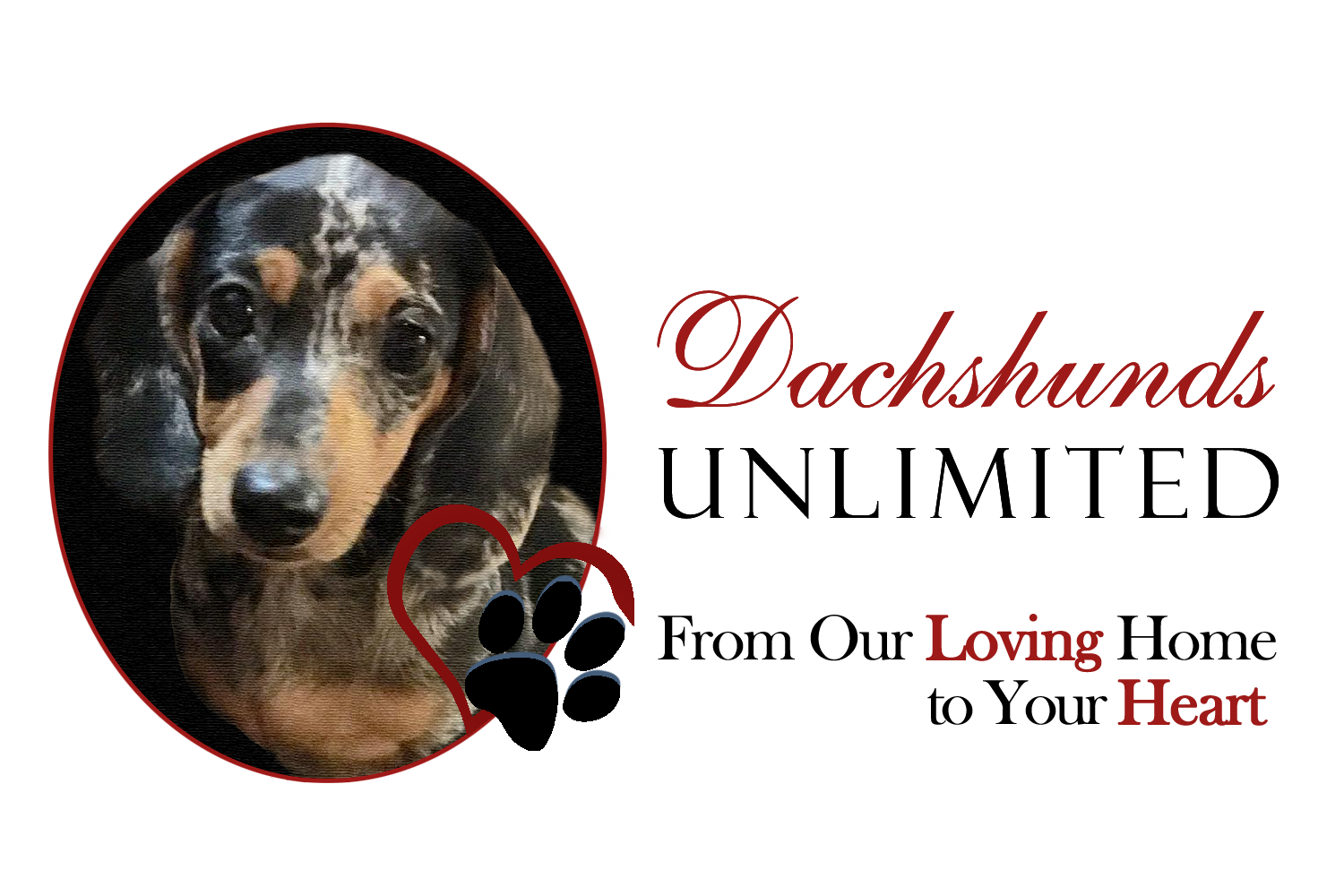Dachshund FAQs
The heart of a Dachshund is full of playfulness, courage, mischief, and stubbornness but most of all, it is overflowing with love. Ask any individual who has had the privilege of being “owned” by a Dachshund, and they’ll tell you that the love they share is beyond comparison.
It was England’s beloved Queen Victoria who once said, Nothing will turn a man’s home into a castle more quickly and effectively than a Dachshund. However, she was not the first member of royalty to fall under the spell of this noble breed.
Some experts theorize that ancient Egyptians, Greeks, Romans, and even South Americans may have hunted with Dachshund types, but all agree that the official origin of this breed began around 1550 when the German aristocracy first began breeding Dachshunds or "Badger Dogs" because of their ability to pursue their quarry underground and to fight, with uncompromising courage, until the battle is won.
Fun Fact: Although Dachshunds are sometimes affectionately known as wiener dogs, because their long bodies somewhat resemble hotdogs, the Dachshund breed actually came first. In fact, the original name for a hotdog was Dachshund Sausage—don't worry—because of its shape not its contents. The deli product was so-named because it resembled the dog breed. Later, in America, the name was later shortened to hotdog. If you would like to learn more about the history of this noble breed, we recommend visiting the American Kennel Club's Dachshund History page.
What is the history of the Dachshund breed?
How many different types of Dachshunds are available? Are all varieties recognized by the AKC?
The Dachshund is counted among the most diverse breeds recognized by the American Kennel Club. Dachshunds not only come in two delightful sizes (i.e., Standard and Miniature), an artistic array of 15 different colors (12 of which are considered standard by the AKC), and six patterns and combinations of markings (three of which are considered standard by the AKC) but also three distinct coat varieties—Smooth, Longhair, and Wirehaired.
The American Kennel Club recognizes two sizes of Dachshunds— Standard and Miniature. The size classification of a Dachshund is not based upon its height or length; it is based solely upon the weight of the Dachshund at one year of age.
In accordance with the AKC's official Dachshund breed standards, an adult Standard Dachshund should weigh between 16 and 32 pounds; however, an adult Miniature Dachshund should weigh fewer than 11 pounds. At Dachshunds Unlimited, we specialize in the breeding of purebred Smooth and Longhair Miniature Dachshunds.
What is the difference between a Standard Dachshund and a Miniature Dachshund?
Are Dachshunds easy to train?
Although Dachshunds are renowned for their stubbornness, they are also highly intelligent, quick to learn, and eager to please you. Dachshunds are also notoriously curious and unfortunately, not always wise in their inquisitive pursuits. For this reason, basic obedience training as well as house training are essential to their safety and your mutual happiness.
Regardless of the type of training, you’ll find that the keys to training a Dachshund successfully are love and patience. However, healthy treats and gentle firmness are also highly recommended. At Dachshunds Unlimited, we begin your puppy’s house training (with pads) and socialization training before your puppy’s adoption day!
Are Dachshunds good with children?
Dachshunds are good tempered by nature; however, their early encounters with children, teenagers, and adults will affect their comfort level with strangers. At Dachshunds Unlimited, we begin your puppy’s socialization training before you bring your puppy home.
Neither our puppies nor their parents are kept in cages; they spend their first two months living side by side with our family of Dachshunds and humans. If you have small children, it is recommended that you supervise your puppy and child when they are together. Small children may not always understand how to care and treat a puppy without accidentally harming him.
Where may I find more information about the Dachshund and the AKC's Official Breed Standards ?

